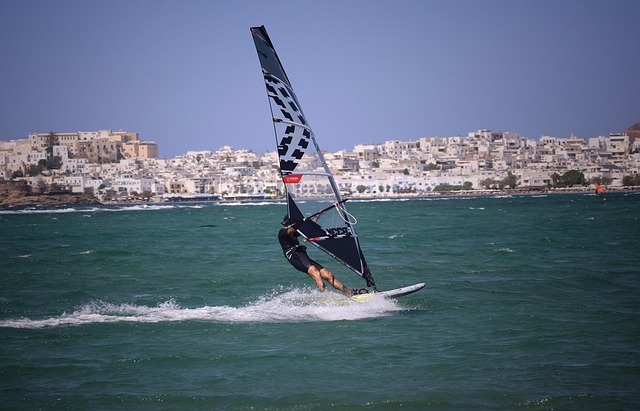For beginners, single fin surfboards offer stability and simplicity, ideal for learning control and technique. Longer boards provide balance, while a central fin enhances responsiveness. 9-foot longboards or 7-foot fish/guns are recommended. Multi-fin setups (2-3 fins) offer agility and improved turns as skills advance, catering to faster speeds and tighter maneuvers. Maintaining balance on multi-fins involves a 'pigeon toe' stance for better control. These options cater to skill levels, enabling surfers to progress from novice to advanced with precision and performance.
For surfboard enthusiasts, fin choices are a key consideration—especially for newcomers. Whether you’re sticking with a single fin or exploring multi-fin setups, the right design can transform your surfing experience. This guide delves into the world of fins, offering insights tailored to both novice and advanced surfers. From understanding the basics of single fin design to navigating the benefits of multiple fins, we equip beginners with knowledge to make informed decisions, ultimately enhancing their surfboard performance and enjoyment.
Understanding Single Fin Basic Design

For those new to surfing, understanding the basic design of a surfboard is crucial. Single fin surfboards are a classic and straightforward design, featuring a single tail fin that provides stability and maneuverability. This simple setup makes them an excellent choice for beginners learning the ropes of surfing. The single fin design allows for easy tracking in the water, ensuring that your board stays on course without much effort.
This type of surfboard is characterized by its elongated shape, with a pointed nose and a rounded tail. The single fin is typically located at the back, contributing to the board’s balance and responsiveness. For beginners, this design offers a more forgiving surfing experience, as it is easier to catch waves and maintain control compared to more complex multi-fin setups. It’s a straightforward and effective option for those taking their first steps in the surf, helping them build confidence and technique on a reliable platform.
Advantages of Using a Single Fin for Beginners

For surfboard beginners, opting for a single fin can offer several advantages that make learning to surf easier and more enjoyable. A single-fin board is typically wider and longer than its multi-fin counterparts, providing greater stability. This increased surface area makes it less likely for the board to nose dive or spin out of control, which is common with multiple fins. The stability also translates into better balance when standing on the board, making it easier for novices to catch waves and practice their paddling technique without feeling unsteady.
Additionally, single-fin surfboards tend to have a more conservative shape, with rounded edges that reduce the risk of cuts and abrasions—a common concern for first-timers. This design also allows for a smoother ride when waves are caught, as the single fin provides a more direct connection to the water, resulting in cleaner turns and easier control. These features make a single-fin board an ideal choice for beginners looking to build confidence and develop their surfing skills on a stable and forgiving platform.
Choosing the Right Single Fin Surfboard
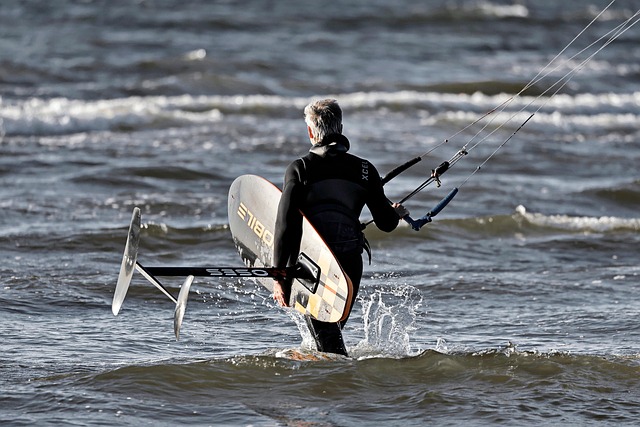
When selecting a surfboard for beginners, especially those opting for a single fin setup, it’s crucial to strike a balance between stability and maneuverability. A common choice is a 9-foot longboard with a single fin. This length provides excellent buoyancy, making it ideal for learning to catch waves without overwhelming the novice surfer with too much board. The single fin offers a smooth and predictable turn, allowing beginners to focus on mastering basic techniques like paddling, standing up, and carving turns.
For those looking for something slightly more agile, consider a 7-foot fish or gun shape with a single fin. These boards are generally narrower, providing quicker turns and better performance in smaller waves. The key is to choose a board that matches your skill level, body weight, and the conditions you’ll be surfing most often. A board that’s too long or heavy can slow you down, while one that’s too short or light might make it challenging to keep on balance.
Mastering Turns with a Single Fin
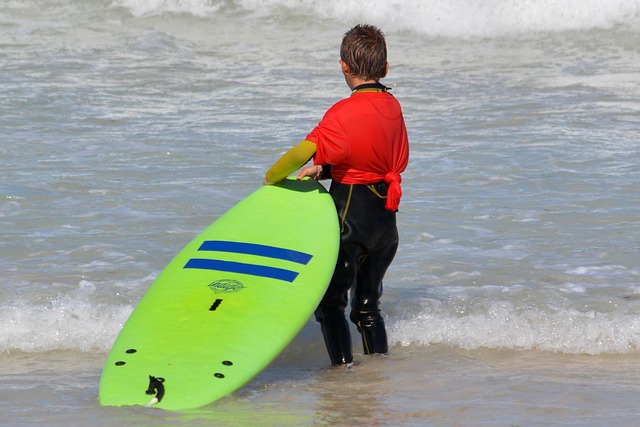
For those new to surfing, mastering turns with a single fin can be a game-changer. A single-fin surfboard, often referred to as a longboard, is ideal for beginners due to its stability and predictability. These boards typically have a larger volume, making them easier to paddle out to the waves. When learning to turn, focus on keeping your body centered over the fin—this provides the necessary balance for smooth, controlled maneuvers.
Practice carving turns by initiating the turn with your upper body, rotating through your core, and shifting your weight. Remember, a single fin reacts differently than multiple fins; it may require more effort to initiate turns but offers greater control once in motion. With consistent practice, you’ll gain confidence and soon be performing elegant, flowing turns on the surfboard for beginners.
Exploring Multiple Fins: Types and Uses
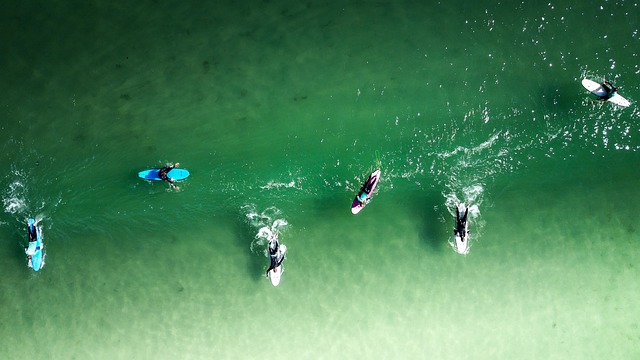
For surfboard enthusiasts, especially those new to the sport, understanding fin configurations is key to enhancing their performance in the water. One popular option among beginners is exploring multiple fins, which offer a range of benefits for various surfing conditions. These setups typically involve two or more smaller fins instead of a single larger one, providing enhanced maneuverability and stability.
Multiple fin arrangements come in diverse types, each serving unique purposes. For instance, tri-fins are popular for their balance and glide, making them ideal for beginners learning to catch waves consistently. Twin-fin setups, on the other hand, promote speed and quick turns, appealing to experienced surfers seeking a more dynamic ride. With such variety available, choosing the right fin configuration can elevate the surfing experience, catering to individual skill levels and preferred styles of riding.
Benefits of Different Fin Configurations
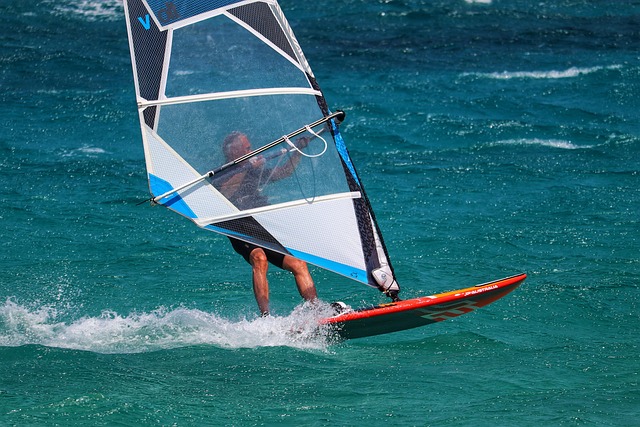
For a surfboard for beginners, fin configuration plays a crucial role in stability and control. A single fin, often called a longboard style, provides excellent stability and glide, making it ideal for learning to catch waves. The simplicity of a single fin allows beginners to focus on mastering basic paddling and turning techniques without the added complexity of multiple fins.
In contrast, multiple fins, typically consisting of two or three, offer more agility and maneuverability. This setup is particularly beneficial for surfboards designed for faster speeds and tighter turns. Beginners who want to explore different surfing styles can benefit from a versatile board with multiple fin options, allowing them to transition from cruising to more dynamic maneuvers as their skills improve.
Tips for Stance and Balance with Multi-Fins

For those new to surfing, mastering balance is key—especially with multi-fins. When using a surfboard designed for multiple fins, positioning your body correctly is crucial. One common tip is to keep your knees bent and slightly closer together, forming a ‘pigeon toe’ stance, which helps maintain stability. This position allows you to shift weight easily and quickly adjust your balance during turns.
Additionally, beginners should focus on keeping their center of gravity low and over the front part of the surfboard. By bending at the knees and maintaining a flexible torso, surfers can enhance their ability to ride multiple fins smoothly. Practicing these techniques will not only improve stability but also contribute to better control and overall confidence on the wave, making it an ideal starting point for any surfboard for beginners.
Advanced Maneuvers with Multiple Fins

For those new to surfing, the idea of multiple fins might seem intimidating, but it opens up a world of advanced maneuvers. A surfboard with multiple fins, often called a tri-fin or quad-fin setup, provides enhanced stability and control, making it ideal for beginners looking to improve their skills faster. These boards allow surfers to perform more complex turns, cutbacks, and even tow-in surfing with greater ease.
As you progress from a surfboard for beginners to one with multiple fins, you’ll discover a new level of agility. The additional fins enable you to achieve tighter radius turns and better hold on steep waves, fostering creativity in your surfing style. Whether you’re looking to carve elegant arcs or execute radical maneuvers, multiple fins offer the precision and performance required to take your surfing to the next level.
